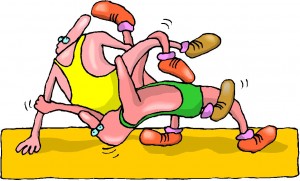
In romance, we have fairly specific types of characters running through our pages: The hero (probably alpha, could be beta), the heroine, the best friend or side-kick, and perhaps a villain or antagonist.
Let’s look at these characters in terms of romance because romance is almost always a character-driven tale of ups, downs and eventual happy-ever-after (HEA) togetherness.
I’m not discounting any combination of relationship (male/male, female/female or anything else) because to my mind you’ll still have at least one person who is more or less portraying the hero and one the heroine, regardless of gender. So, with that disclaimer let’s start.
While many heroes are alpha males, there is also the beta hero. What’s the difference? For me – it comes down to ease of emotion and sensitivity.
Alphas are strong – they ooze confidence and strut arrogance. They’re über capable and may even be abrasive because they don’t really care if they offend anyone. They don’t worry about their emotions or being sensitive. They don’t need to. They’re too busy kicking-ass. If they were a doll (action-figure, for the guys), they’d be G.I. Joe. Guys want to be them and girls want (desperately) to be with them.
Beta heroes are more subtle. They’re often funny and charming. They may be able to kick ass, but they’d rather reason or humor their way out of any conflict. Mother’s love them. They bring flowers just because and remember anniversaries. They’re in touch with and willing to express their emotions. They can (and do) plan candle-light dinners and know what present will bring their lady-love joy. If they were a doll/action figure, they’d be Ken. Happy to hang out in Barbie’s dream house for romantic weekends of long talks and walks along the beach.
I love both types of heroes.
Our heroines need to be smart and capable. No one wants to read about a lead character who is too stupid to live (it’s a thing… really). We want our heroines to perhaps need rescued from a situation but not from their lives. They need to be able to stand on their own two feet just fine without our hero, so they don’t need the hero, but they want him.
The key is that our hero and heroine are both better people for having the other in their life. And as a reader, we need to love them both. If we don’t, we aren’t rooting for them to get together and find their HEA. Through this identification with and love for the characters, we are invested in their path to happiness, and that’s what a romance is all about – the emotional journey. Next month when we discuss genres, I’ll go into more depth on the whys and what-fors that make romance … romance. Right now, let’s continue on with the people inhabiting our stories.
We may also have the sidekick/best friend characters. Like other genres, these people can be a huge amount of fun because they don’t have to be heroic. They get to have a lot more flaws and we don’t have to love them. They can be cowardly, obnoxious, slightly stupid, clumsy… a whole host of things that our heroes do not get to be. They are perfect foils for our leads characters.
Our villains and antagonists in romance may or may not be actual bad guys/gals, they may just be the wrong guy/gal for our hero/ine. How far this character is willing to go to keep our leads in their lives determine where they fall on our villain – antagonist spectrum. Or they may be someone (a well-meaning, or not, relative?) who feels these two should not be together and will do whatever it takes to keep them apart. Often though, what is keeping our lovebirds from their HEA isn’t a who so much as a what – their flaws or internal conflicts. I’ll discuss more on this next month as well.
What traits do ya’ll think are necessary for our hero/ine to be identified with and loved?






